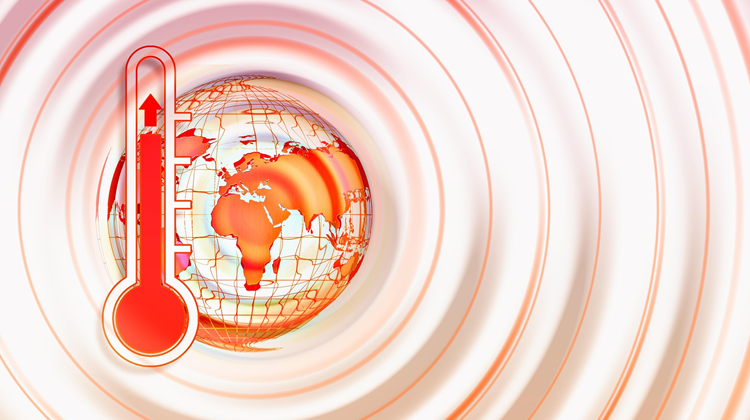Tariff tensions hit SA-US trade

Key South African industries are in the crosshairs as US trade policy shifts, threatening trade surplus and long-term growth.
On 2 April 2025, US President Donald Trump announced sweeping new reciprocal tariffs targeting imports from various countries, including South Africa (SA). As part of this policy shift, all South African goods entering the US are now subject to a 30% tariff, with a specific 25% tariff imposed on vehicles and car parts. However, key mineral exports such as platinum group metals (PGMs), coal, gold, manganese and chrome have been explicitly excluded from these new tariffs.
The automotive sector, a cornerstone of SA’s export portfolio, faces significant disruption from the newly imposed 25% tariff on the country’s vehicles and car parts. This measure will raise export costs on automotive products and reduce their competitiveness in the US market, threatening over US$1.34 billion in annual automotive exports to the US (in 2023 figures).
Historically, SA’s automotive trade with the US has been a remarkable success story. From a US$75 million deficit in 1988, the sector achieved a US$560 million surplus in 2023, peaking at US$1.41 billion in 2010 (Chart 1). In 2023 alone, this surplus accounted for 53% of SA’s total trade surplus with the US—underscoring the sector’s strategic importance and the potential impact of these new tariffs.
This progress has been driven in large part by the African Growth and Opportunity Act (AGOA), which opened preferential access to US markets. Since AGOA’s enactment in 2000, the automotive trade surplus has grown nearly 21-fold, from just US$27 million in 2000.
Overall, SA-US total bilateral trade has improved substantially since AGOA’s enactment. Alongside this growth, SA’s trade balance with the US has steadily improved, with the country consistently recording a trade surplus from 2004 onwards, rising from approximately US$495 million to US$1.05 billion by 2023. Despite this progress, AGOA’s uncertain renewal signals another blow looming for SA—threatening to unravel the trade gains not just for the country itself but for other African beneficiaries.
PGMs, exempted from the new US tariffs, are a key component of the broader export category ‘precious metals and stones, imitation jewellery, and coins’, representing the largest share of SA’s exports to the US (Chart 2). The share of this category in total exports to the US has grown from 23% in the pre-AGOA era (1988–2000) to 33% during the AGOA period (2001–2023).
Note: Products are categorised according to the South Africa Trade HST 6-digit World Bank Classification.
During the same timeframe, vehicles and car parts—once a marginal export—rose sharply from 2.5% to 16.6%, reflecting the sector’s rapid expansion. Other categories gaining traction include aluminium, chemicals, mineral fuels and machinery. However, this progress now faces significant risk under the new US tariff regime.
The exemption of PGMs appears strategic rather than incidental. These critical minerals are predominantly mined and exported by US-affiliated firms such as Anglo American Platinum, Impala Platinum and Sibanye Stillwater—suggesting the move is designed to protect US corporate interests and safeguard critical raw material supplies essential to US manufacturing industries.
PGMs were spared US tariffs, underscoring their critical role in US manufacturing and the imperative to safeguard American corporate interests
Machinery and equipment—including nuclear reactors, boilers and mechanical appliances—constitute the largest share of SA’s imports from the US before and during the AGOA era (Chart 3). Interestingly, this category ranks fourth among SA’s exports to the US (Chart 2). However, the trade balance in this product category has steadily deteriorated, with the deficit widening from US$599 million in 1988 to US$1.12 billion in 2023. The imposition of new US tariffs will further inflate export costs for products in this category, exacerbating an already widening trade imbalance.
Other top SA imports from the US have also grown significantly during the AGOA era compared to pre-AGOA years. Notably, original equipment components have surged from just 0.9% of total US imports pre-AGOA to nearly 21% under AGOA—displacing cereals, previously among the leading imports.
Trump’s tariff hikes will hinder SA’s exports of vehicles, machinery, engines and related components to the US. This will likely have a significant impact on the automotive, engineering-related manufacturing, and broader export sectors, with potential long-term repercussions for the South African economy.
While the tariffs do not directly target the PGM mining sector, minerals such as platinum, palladium and rhodium—vital for producing autocatalysts used in vehicle exhaust systems—remain vulnerable. A slowdown in vehicle and car parts sales could suppress demand for these metals, leading to price volatility in the near term.
Note: Products are categorised according to the South Africa Trade HST 6-digit World Bank Classification.
These developments are particularly concerning because the US is currently SA’s second-largest bilateral trading partner, both in total trade and exports. The Trump administration justifies the tariffs as punitive measures to address trade imbalances and support US manufacturing. However, for SA, the move appears politically motivated. It may be seen as a response to SA’s stance on issues such as the Israeli–Palestinian conflict, its alignment with the BRICS+ currency initiative, and the proposed land expropriation legislation. As a result, the country may find itself under pressure to either compromise on these positions or concede to US demands to restore trade relations.
Growing tensions between the two nations have fueled the view that SA should reorient its trade strategy eastward—toward China, its largest bilateral trading partner. However, such a shift will not be automatic. Many products that gained US market share under AGOA (Chart 2) have seen declining demand in China under the Forum on China-Africa Cooperation (FOCAC) era, with the exception of mineral fuels and oils.
Germany and Japan may offer short-term relief, particularly in sectors such as automotive, machinery and energy-related exports. Still, a broader, forward-looking strategy—including regional as well as Asian and European market diversification—is essential for SA to navigate the fallout from US tariff hikes sustainably.
Germany, a key partner under the EU–SADC Economic Partnership Agreement (EPA), offers duty-free access and established trade links, especially in automotive and machinery. However, its recent economic slowdown and already substantial import volumes from SA limit immediate growth prospects.
The European Community as a whole offers a strategic counterbalance to the impact of US tariffs through its Trade, Development and Cooperation Agreement (TDCA) with SA. This agreement establishes preferential trade terms and paves the way for the gradual creation of a Free Trade Area, offering SA valuable alternative market access and economic resilience.
Japan, on the other hand, continues to show stable demand for platinum, coal and minerals that are vital to clean energy technologies, offering promising long-term potential despite logistical hurdles and market competition.
Germany and Japan can help cushion the blow, but they are not complete replacements, SA’s exports to the US remain critical
While both Germany and Japan present lower political risk and more stable trade environments, fully offsetting the loss of the US market would require time for extensive trade diplomacy, strategic investment realignment and greater diversification across sectors.
Ultimately, Trump’s tariffs and his foreign policy in general highlight the need for African countries to diversify export markets, reduce reliance on single trade and investment partners, and strengthen regional integration through initiatives like the African Continental Free Trade Area (AfCFTA). This underscores the importance of beneficiation, securing strategic trade agreements, and building industrial capacity to better withstand global trade shocks. African countries must further invest in trade foresight and monitor geopolitical risks to ensure economic resilience in an increasingly uncertain international environment.
Image: geralt/Pixabay






